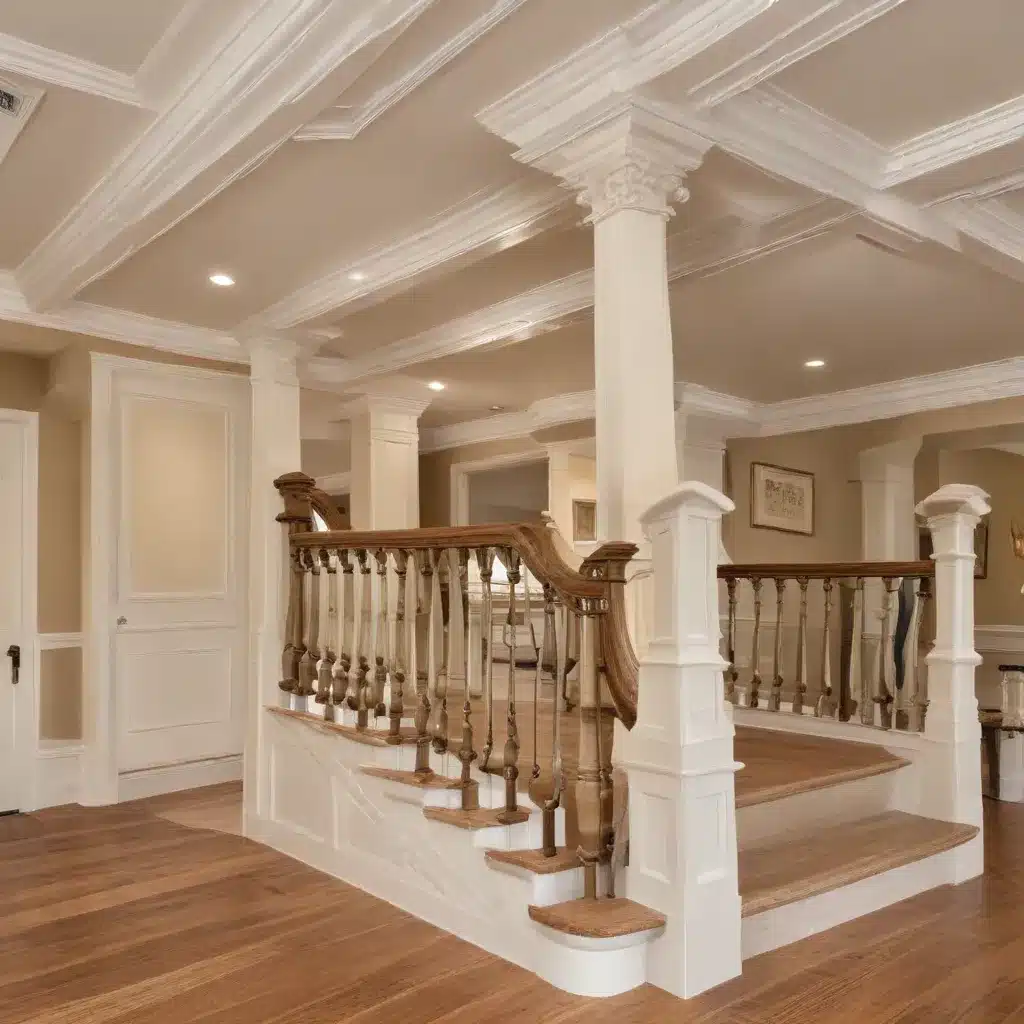
Woodcraft Parts for Architectural Moldings: Elevating Your Home’s Aesthetic
Mastering the Art of Decorative Millwork
As an experienced woodworker and craftsman, I’ve come to deeply appreciate the transformative power of architectural moldings. These intricate woodcraft elements possess the remarkable ability to elevate the aesthetic of any space, breathing life and character into the most ordinary of interiors. Whether you’re tackling a complete home renovation or simply looking to add the finishing touches, incorporating distinctive moldings can make all the difference.
In this comprehensive guide, I’ll share my insights and expertise on the world of decorative millwork. From the foundational principles of classical architecture to the practical tips for selecting and installing the right moldings, we’ll explore everything you need to know to take your woodworking projects to new heights.
Understanding the Language of Classical Architecture
To truly harness the potential of architectural moldings, it’s essential to first familiarize ourselves with the rich vocabulary and underlying principles of classical design. The classical orders – Doric, Ionic, and Corinthian – serve as the cornerstone of this architectural tradition, each with its own unique set of proportions and visual characteristics.
At the heart of this classical system lies the entablature, a horizontal structure composed of three distinct elements: the architrave, the frieze, and the cornice. These individual components work in harmony to create a visually balanced and structurally sound framework, echoing the very principles that governed the construction of ancient Greek and Roman buildings.
By understanding the role and relationship of these architectural elements, we can start to see how they can be applied to the interior of our homes. The chair rail, for instance, finds its roots in the height of the classical pedestal, while the crown molding and base trim derive their proportions from the cornice and architrave, respectively.
Elevating Your Interiors with Decorative Millwork
Now that we’ve laid the groundwork, let’s dive into the practical applications of decorative millwork. One of the most versatile and impactful ways to utilize these woodcraft elements is in the creation of distinctive door and window casings. By designing and installing a full entablature around these openings, you can instantly elevate the visual interest and hierarchical significance of a space.
Consider the example of the Lancaster Room at the Winterthur Museum, where the full entablature is expressed around the entire perimeter of the space. The result is a harmonious and visually striking interior, one that immediately commands the attention of the viewer. Similarly, the door headers in the Entry Hall demonstrate how a well-executed entablature can imbue a simple opening with a sense of grandeur and importance.
But the beauty of decorative millwork doesn’t have to be limited to the walls. Fireplaces, too, can benefit immensely from the strategic placement of these architectural elements. Mantels often serve as miniature entablatures, with the architrave wrapping down the sides and the frieze and cornice working in tandem to create a focal point that draws the eye.
Navigating Scale and Proportion
One of the key challenges in working with decorative millwork is ensuring that the scale and proportion of the elements are in harmony with the overall dimensions of the space. After all, the true power of classical architecture lies in its ability to create a sense of human scale and comfort.
When designing a mantel or door header, for instance, it’s crucial to consider the relationship between the height of the opening and the dimensions of the entablature. A too-small or too-large entablature can throw off the visual balance and disrupt the overall aesthetic.
Similarly, the placement and sizing of the individual molding components can have a profound impact on the final result. The bedmold, cornice, and frieze must all be carefully proportioned to create a visually harmonious composition.
Incorporating Decorative Details
While the foundational elements of the classical orders provide a solid framework, the true artistry of decorative millwork often lies in the intricate details. Ornamental features like dentils, corbels, and gable pediments can add an extra layer of visual interest and historical authenticity to your woodworking projects.
One particularly striking example is the pulvinated frieze, a convex or S-shaped profile that can be used to great effect in spaces with limited ceiling height. By introducing this decorative element, you can create the illusion of a taller, more impressive entablature without compromising the proportions of the room.
Maintaining and Preserving Your Woodwork
Of course, the beauty and longevity of your decorative millwork is only as good as the care and attention you give it. Proper maintenance and preservation techniques are essential for ensuring that your woodcraft elements stand the test of time.
Regular cleaning and finishing with high-quality wood sealants and paints can go a long way in protecting your moldings from the ravages of moisture, insects, and weathering. Additionally, being mindful of the wood species and construction methods used can greatly enhance the durability and long-term performance of your architectural elements.
Crafting Your Dream Home with Woodcraftparts.net
Whether you’re a seasoned woodworker or a homeowner looking to breathe new life into your space, the team at Woodcraftparts.net is here to support you every step of the way. Our extensive collection of high-quality moldings, columns, and other decorative elements is designed to help you bring your architectural visions to life.
Explore our website to discover the endless possibilities for elevating your home’s aesthetic with the timeless beauty of decorative millwork. From traditional to contemporary styles, we’ve got the tools and expertise to help you create the space of your dreams. So why settle for the ordinary when you can elevate your surroundings with the power of woodcraft?

